PICARDY
Population

Population

Popular destinations FRANCE
| Alsace | Ardeche | Auvergne |
| Brittany | Burgundy | Cevennes |
| Corsica | Cote d'azur | Dordogne |
| Jura | Languedoc-roussillon | Loire valley |
| Lot | Normandy | Picardy |
| Provence |
Population
Picardy has a population of 1.857.000 (2024), which equates to a population density of around 96 inhabitants per km². Many Picards still live in the countryside, a third of the population (= about 85% of the 2291 communes) live in villages of less than a thousand inhabitants. Amiens is the largest city in the region with approx. 135,000 inhabitants. The second largest town in Picardie is Saint-Quentin with 60,000 inhabitants; the third largest town is Beauvais with about 55,000 inhabitants.
The degree of urbanisation, the ratio of the number of people living in towns to the number of people living outside them in often rural areas, is around 60% in Picardy. In particular, the countryside around cities such as Amiens, Beauvais, Compiègne, Creil, Laon, Saint-Quentin and Soissons is still urbanising.
Language
The official language is French, but minorities also speak Picard (Picardy), Breton (Brittany), Occitan (the south), Basque (in the western Pyrenees), German (Alsace-Lorraine), Dutch (French Flanders), Catalan (Roussillon), Italian (around Nice) and Corsican (in Corsica).
The North French Picard language, related to French and Walloon, was at its height in the 13th century, in 1225 even a so-called 'nation picarde' was established at the University of Paris. During the Acien Régime in France (from about 1450 to about 1789), the language barely survived, but in the 19th century it was restored to some extent. From the 1960s onwards, the Picard dialect was again the subject of scientific research. Books, especially comic books such as Tintin and Asterix, are published in Picard again, and the magazine Ch'Lancron is published every three months.
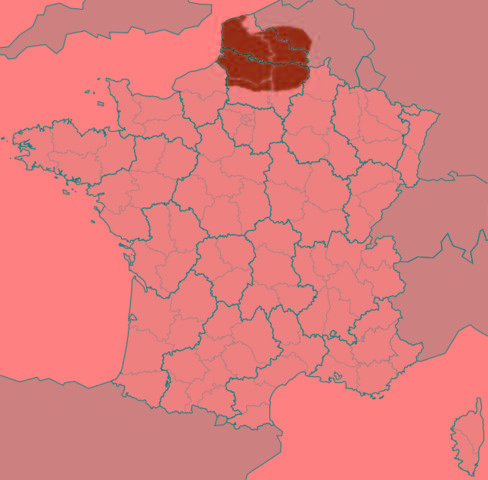 Distribution of the Picard languagePhoto :Polletfa CC 3.0 Unported no changes made
Distribution of the Picard languagePhoto :Polletfa CC 3.0 Unported no changes made
Some words and phrases in English, French and Picard.
| English | French | Picard |
| hello | bonjour | bojour |
| English | Anglais | Inglé |
| good evening | bonsoir | bonsoèr |
| good night | bonne nuit | boinne nuit |
| goodbye | au revoir | À s'ervir of À l'arvoïure |
| have a nice day | bonne journée | eune boinne jornée |
| please | s'il vous plaît | sins vos komander |
| thank you | merci | merchi |
| excuse me | pardon of excusez-moi | pardon of échtchusez-mi |
| what is your name? | comment vous appelez-vous? | kmint qu'os vos aplez? |
| how much? | combien ça coute? | combin qu'cha coûte |
| i do not understand | je ne comprends pas | Éj n'comprinds poin |
| help! | À l'aide! | À la rescousse! |
| can you please help me? | pouvez-vous m'aider, s'il vous plaît | povez-vos m'aider, sins vos komander |
| where are the toilets? | Où sont les toilettes? | d'ousqu'il est ech tchioér |
| do yoy speak English? | parlez-vous anglais? | parles-vos inglé? |
| I do not speak Picard | je ne parle pas Picard | Éj n'pérle poin Picard |
| i do not know | je ne sais pas | Éj n'sais mie |
| i know | je sais | Éj sais |
| i am thirsty | j'ai soif | j'ai soé |
| i am hungry | j'ai faim | j'ai fan |
| how do you do? | comment vas-tu? of ça va | comint qu'i va of cha va t'i |
| i am fine | ça va bien | cha va fin bien |
| sugar | sucre | chuque |
Religion
General
The French population is about 80% Roman Catholic (approx. 48 million), 4.5% predominantly Sunni Islamic (approx. 4 million) and there are also small minorities of Protestants (approx. 950,000), Jews (approx. 700,000; the largest Jewish community in Europe) and Armenian-Christian. Catholicism was the state religion since the revocation of the Edict of Nantes in 1685 by Louis XIV.
Since the separation of church and state in 1905, the state no longer has any involvement with the Church. The Roman Catholic Church has eighteen provinces in France and a total of 95 dioceses. The Archbishop of Lyon is at the head of the ecclesiastical provinces.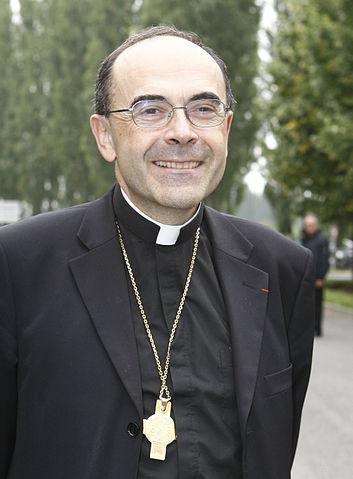 Philippe Barbarin, archbishop of LyonPhoto: MEDEF CC 2.0 Generic no changes made
Philippe Barbarin, archbishop of LyonPhoto: MEDEF CC 2.0 Generic no changes made
After St. Bartholomew's Day (1572), the power of Protestantism in France was broken. Protestant churches were not recognized until the law of 1802. The main Protestant denominations are: the Église Réformée de France, the Église de la Confession d'Augsburg d'Alsace et de Lorraine, the Église évangélique luthérienne and the Église réformée d'Alsace et de Lorraine.
Since 1905 there has been a federation of Protestant churches consisting of Reformed, Lutherans, Baptists, Methodists and free churches: the Fédération Protestante de France.
Protestant theological faculties for the training of ministers are located in Aix-en-Provence, Montpellier, Paris and Strasbourg; the last two are inter-confessional faculties. Despite the relatively small number, the influence of the Protestants in France is quite large.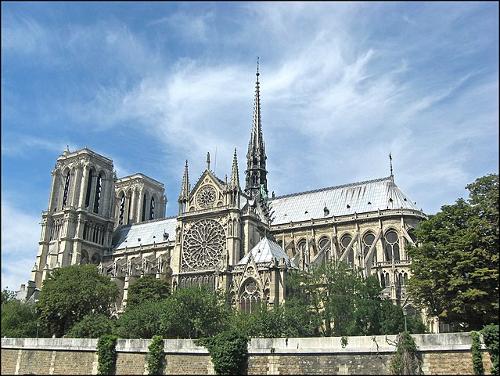 Notre-Dame de Paris is an early Gothic cathedralPhoto: Madhurantakam CC 3.0 Unported no changes made
Notre-Dame de Paris is an early Gothic cathedralPhoto: Madhurantakam CC 3.0 Unported no changes made
Religious buildings in Picardy
Abbeville - Collégiale Saint-Vulfran: The construction of this collegiate church, with two 55-metre high towers, was started in 1488 and only completed in the 17th century. The main portal has beautiful Renaissance doors and houses a number of statues of bishops. The abstract stained-glass windows in the choir are by the American painter William Einstein (1907-1972), a representative of the Parisian School.
Albert - Basilique Notre-Dame-de-Brébières: This neo-Byzantine basilica was designed at the end of the 19th century by architect Edmon Duthoit (1837-1889) from Amiens. The church is built of red brick with a minaret-like bell tower. The church was destroyed in the second year of the First World War (1915) and rebuilt in 1929 by Edmond Duthoit's son, Louis (1868-1931) The statue of Mary with Jesus on the tower remained askew until 16 April 1918 when it was hit by a shell. The statue became world-famous as the 'Hanging Madonna'.
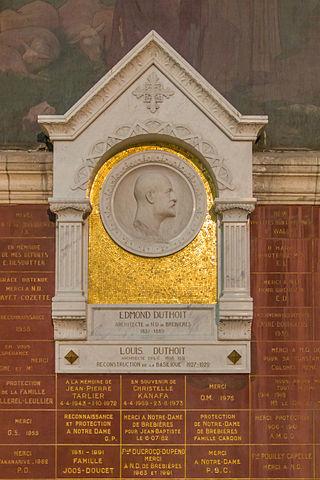 Edman Duthoit and Louis DuthoitPhoto: Raimond Spekking CC BY-SA 4.0 no changes made
Edman Duthoit and Louis DuthoitPhoto: Raimond Spekking CC BY-SA 4.0 no changes made
Amiens - Cathédrale Notre-Dame: First designed by Robert de Luzarches (c. 1180 - c. 1228), later by Thomas de Cormont ( - 1228) and his son Renaud de Cormont.
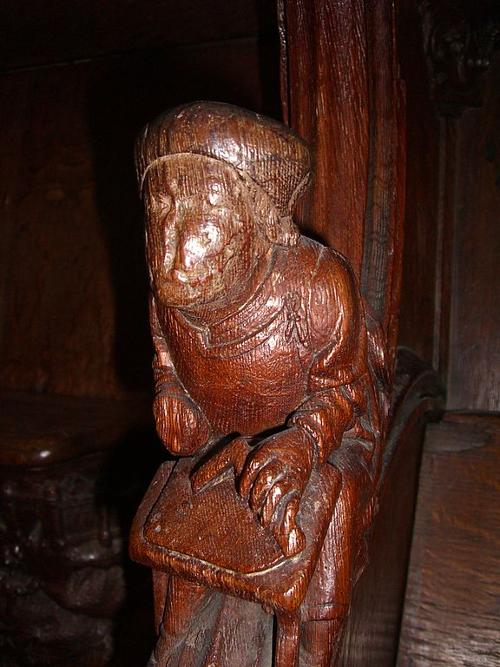 Wooden sculpture of Robert de Luzarches one of the designers of the Cathedral of Amiens, PicardyPhoto: Public domain
Wooden sculpture of Robert de Luzarches one of the designers of the Cathedral of Amiens, PicardyPhoto: Public domain
The two bishops who ordered the construction of the cathedral were Évrard de Fouilloy (c. 1145 - 1222) and Geoffroy d'Eu ( - 1236).
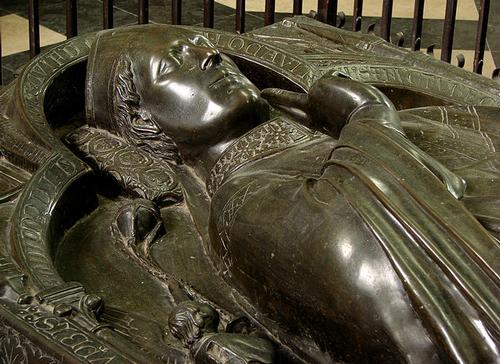 Bishop Evrard de Fouilloy founded the Cathedral of Amiens, PicardyPhoto: Vassil in the public domain
Bishop Evrard de Fouilloy founded the Cathedral of Amiens, PicardyPhoto: Vassil in the public domain
The construction of the gigantic cathedral took a relatively short time, from 1120 to 1269. The side chapels were built in 1375, the tower was completed in the 15th century. The nave of the cathedral is 54 m long and 42.5 m high, the highest in France. The cathedral has been on UNESCO's World Heritage List since 1981 and is the largest Gothic building in France. The Notre-Dame of Paris fits into the Amiens Cathedral in its entirety. The 110 choir stalls were made in the 15th and early 16th centuries by Picardy woodcarvers or 'huchiers' with thousands of Old Testament figures, the life of Mary and daily life in Amiens.
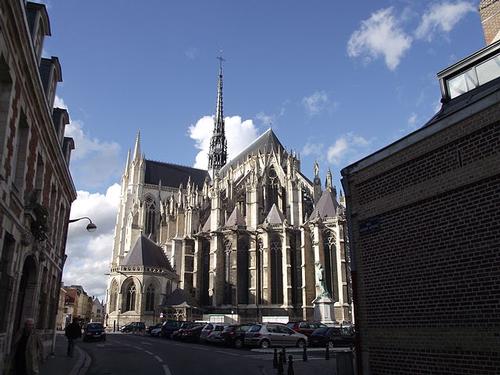 Cathedral of Amiens, PicardyPhoto: Parsifall CC 3.0 Unported no changes made
Cathedral of Amiens, PicardyPhoto: Parsifall CC 3.0 Unported no changes made
Beauvais - Cathédrale Saint-Pierre de Beauvais: This cathedral, dedicated to Saint Peter, was built from 1225 onwards on the foundations of another cathedral. The cathedral is unique due to its gigantic dimensions and the fact that it was never completed. The decision to build a new church, the largest of its time, was taken by the Count-Bishop of Beauvais, Milon of Nanteuil (-1234). The keystones are 48 m high, the choir is 68 m high, almost as high as Notre-Dame in Paris; the cross is 153 m high. The choir collapsed in 1248 and no work was done on the church during the Hundred Years' War; it was only in 1500 that construction resumed under the direction of the Parisian architect Martin Chambiges (1460-1532).
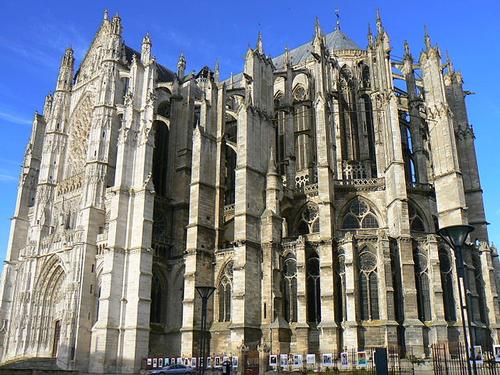 Saint Pierre Cathedral in Beauvais, PicardyPhoto: Syl de Isa CC 4.0 International no changes made
Saint Pierre Cathedral in Beauvais, PicardyPhoto: Syl de Isa CC 4.0 International no changes made
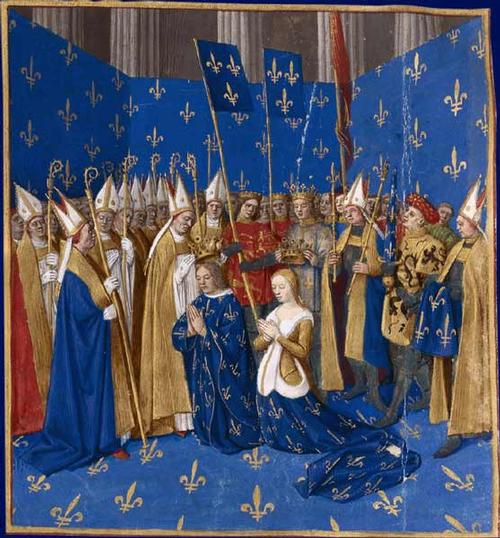 Coronation of Louis VIII, on the far right Milon of Nanteuil is standingPhoto: public domain
Coronation of Louis VIII, on the far right Milon of Nanteuil is standingPhoto: public domain
Beauvais - Église Saint-Étienne: Church with a Romanesque nave and transept, the tower was built between 583 and 1674. Cornices are supported by modillons ("beauvaisiennes"), a decoration in the form of a support. The choir was built at the beginning of the 16th century in the Flamboyant-Gothic style. Further noteworthy are a rose window of 12 segmenets, a 16th century polychrome (altar) retable and very beautiful stained-glass windows.
Folleville - Église Saint-Jacques-le-Majeur-et-Saint-Jean-Baptiste de Folleville: 15th-16th century church with Flamboyant-Gothic features. On the outside, there are statues of St. James and Mary with Child. The Renaissance font is made of Carrara marble; there are tombs of Raoul de Lannoy and his wife Jeanne de Poix and of the son François de Lannoy and his wife Marie d'Hangest. A beautiful water basin is decorated with statues of St. Francis and St. John the Baptist, the patron saints of the De Lannoy-De Poix couple.
Laon - Cathédrale Notre-Dame: The construction of one of the oldest Gothic cathedrals in France started in the second half of the 12th century and was completed in 1230. The famous towers (56 m) were designed by Villard de Honnecourt. The dimensions of the church are 110 m long, 24 m high and 30 m wide. Special features are the 13th century stained-glass windows, the 17th century organ, the interior and exterior sculptures and the icon "Sainte Face de Laon", which originated in Slavonic countries.
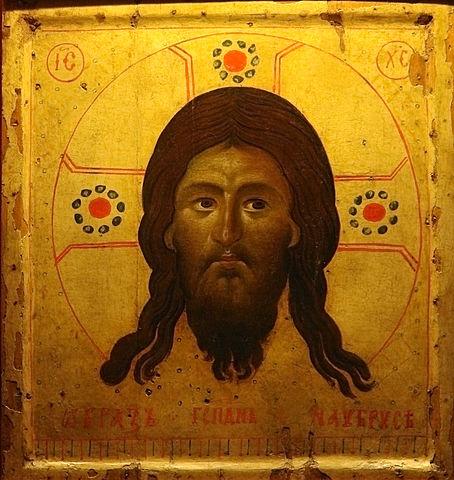 Icon Sainte Face de Laon, PicardyPhoto: public domain
Icon Sainte Face de Laon, PicardyPhoto: public domain
Morienval - Église Notre-Dame: Founded in the 7th century and then part of a women's abbey. Destroyed by the Normans at the end of the 9th century and rebuilt from the 11th century onwards. In the 17th century, just like the abbey, it was thoroughly rebuilt by abbess Anne II de Foucault. It is remarkable that the north tower is lower than the south tower. The arches of the ambulatory were built around 1125 and are among the oldest in France.
Noyon - Cathédrale Notre-Dame de Noyon: Roman Catholic cathedral dating from 1145 and seat of the bishop of Noyon from the middle of the 6th century until 1790. Then it became part of the diocese of Beauvais and has been called Neauvais-Noyon since 1851. The site of the present church was formerly occupied by four churches; the cathedral, built from 1145 to 1235, is one of the first major Gothic buildings in France. The cathedral also contains a chapter house. The nave is 91.33 m long, 22.73 m high and 10.23 m wide. The north tower of the cathedral is 66 m high.
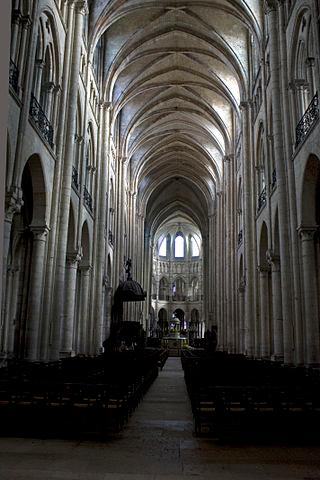 Noyon cathedral, Picardy, navePhoto: D Villafruela CC 3.0 Unported no changes made
Noyon cathedral, Picardy, navePhoto: D Villafruela CC 3.0 Unported no changes made
Rue - Chapelle du Saint-Esprit: The chapel is lavishly decorated in Gothic style with sculptures from the 15th and 16th centuries. The 15th-century doors are carved in the shape of a folded canvas. The vault of the narthex is crowned by a gigantic keystone. In the 'treasure room' there are 17 stone statues of kings, saints and evangelists.
Saint-Germer-de-Fly - Abbaye de Saint-Germer-de-Fly: Early Gothic abbey church, built between 1150 and 1175. With 18th century choir stalls in Corinthian style. On the same site is a 13th century Sainte-Chapelle after Paris' example with a beautiful rose window.
Saint-Leu-d'Esserent - Église Saint-Nicolas de Saint-Leu-d'Esserent: The construction of this church started in 1140 and ended in 1210. It is a priory church with Romanesque and Gothic features, built from the famous "stone of St-Leu", which was used for many other churches and cathedrals in France. The beautiful stained-glass windows date from 1960, the two square towers with a gabled roof, the ambulatory and the apsidal chapels are from the 12th century.
Saint-Martin-aux-Bois - Abbaye de Saint-Martin-aux-Bois: The abbey church has a 13th-century nave that is almost as wide (31 m) as it is high (27 m). Below all the high windows, there are three clover-shaped openings in the wall. The church has some beautiful late 15th-century choir stalls. The patron saints of the church are Saint Ambrose and Saint Jerome.
Saint-Quentin - Basilique Saint-Quentin: This basilica, given this status by Pope Pius IX in 1876, is dedicated to the 3rd century martyr Saint Quintinus; the nave is 123 m long, 52 m wide and 34 m high. The construction of the church started at the end of the 12th century and lasted more than 300 years for various reasons (e.g. wars, lack of money). And the basilica is still unfinished, the construction of the facade and two adjacent towers was stopped at the beginning of the 16th century due to lack of money. Special features are a labyrinth in the church floor, the 5th century Chapelle St-Fursy, a stone sacrarium from 1409 with sacred vessels and a modern organ with 6430 pipes.
Saint-Riquier - Abbaye Saint-Riquier: The abbey church has been rebuilt and restored several times and has a 50-metre high tower. The nave of the church is 96 m long, 24 m high and 13 m wide. In one of the chapels, there is a somewhat strange painting by the (court) painter of mainly religious scenes Jean Baptiste Jouvenet (1644-1717), "Louis XIV touches the sufferers of the glandular disease" from 1690. At the entrance to the central chapel hangs the painting from 1847, 'Apparition of Mary to Saint Philomena' by the foot painter Louis Joseph César Ducornet (1806-1856).
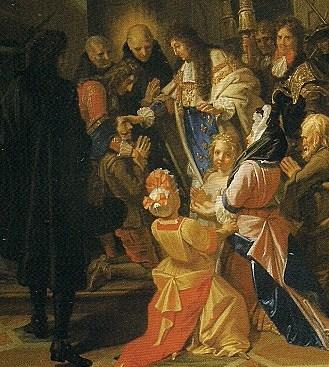 Painting by Jouvenet in the abbey church of Saint-Riquier, PicardyPhoto: Public domain
Painting by Jouvenet in the abbey church of Saint-Riquier, PicardyPhoto: Public domain
Senlis - Cathédrale de Notre-Dame: The smallest cathedral in Picardy, which, like Notre-Dame in Paris, fits almost entirely into the cathedral in Amiens. The construction of the cathedral started in 1153 and it was only around 1240 that the transept and the spire were added. In 1504 the church burned down and was then rebuilt. The nave of the cathedral is 70 m long, 19.20 m wide and 24 m high. A special feature is that Gothic buttresses are supported by stands in the side aisles.
Soissons - Cathédrale Saint-Gervais-et-Saint-Protais: A magnificent example of Gothic architecture, the 116 m long, 25.6 m wide and 30.3 m high cathedral is also perfectly symmetrical. Construction began in the 12th century and lasted until after the Hundred Years' War (1337-1453); the north tower was never completed. Special features are the lancet-gothic choir, the white marble statues on both sides of the altar and a painting by Peter Paul Rubens, 'Adoration of the Shepherds'.
Thiérache - Special are the approx. 65 fortified churches (églises fortifiées) from the 16th and 17th century in the Thiérache region, among others in Archon, Beaurain, Burelles, Chaourse, Dagny-Lambercy, Dohis, Englancourt, Gronard, Hary, Jeantes (walls painted by the Limburg artist Charles Eyck (1897-1983), La Bouteille, Marly-Gomont, Montcornet, Morgny-en-Thiérache, Parfondeval, Plomion, Prisces, Vervins and Wimy.
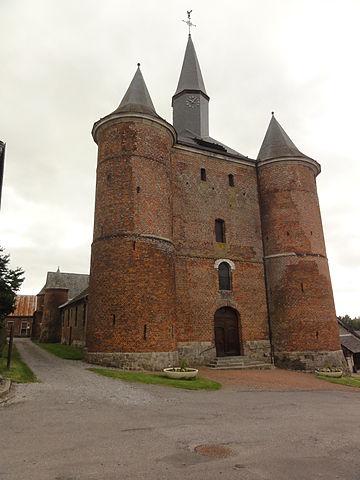 Fortified church of Plomion, PicardyPhoto: Havang(nl) in the public domain
Fortified church of Plomion, PicardyPhoto: Havang(nl) in the public domain
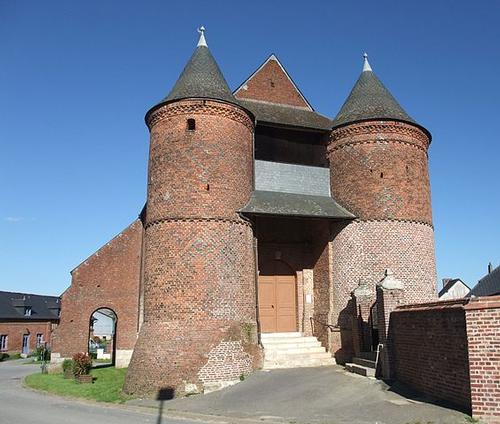 Fortified Church Archon, PicardyPhoto: Jeanmichelparis CC 3.0 Unported no changes made
Fortified Church Archon, PicardyPhoto: Jeanmichelparis CC 3.0 Unported no changes made
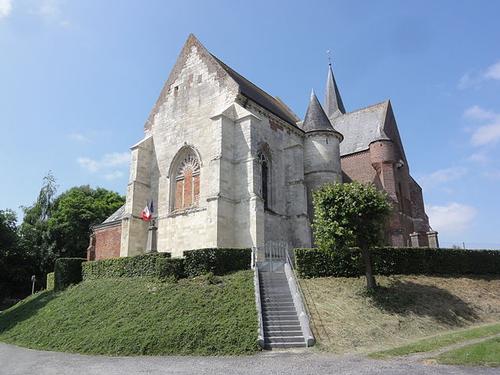 Fortified Church Burelles, PicardyPhoto: Havang(nl) in the public domain
Fortified Church Burelles, PicardyPhoto: Havang(nl) in the public domain
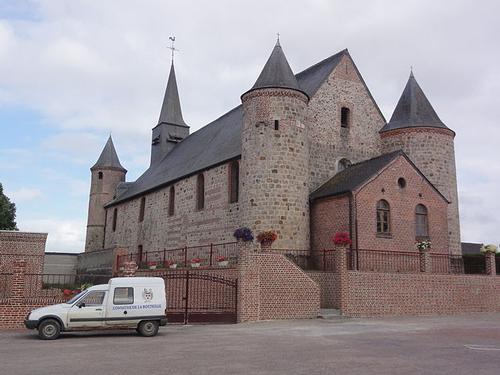 Fortified Church La Bouteille, PicardyPhoto: Havang(nl) in the public domain
Fortified Church La Bouteille, PicardyPhoto: Havang(nl) in the public domain
Sources
BBC - Country Profiles
CIA - World Factbook
Heetvelt, Angela / Picardië : Nord-Pas-de-Calais
ANWB
Picardie : Somme-Oise-Aisne
Lannoo
Wikipedia
Copyright: Team The World of Info